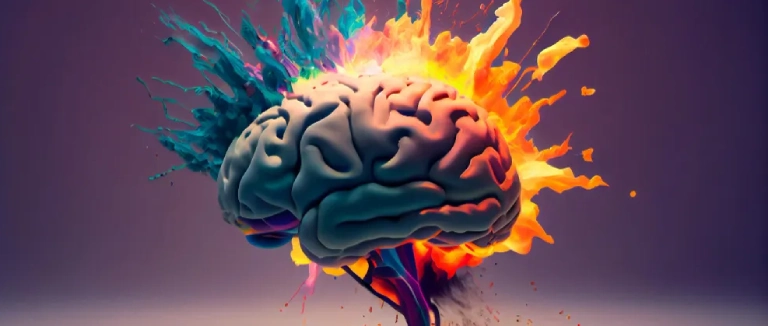The spinal cord, a part of the brainstem, is a structure that connects the brain to the spinal cord. The neurons within this structure control many automatic functions in the body. These include breathing, regulation of heart rate, blood pressure, swallowing, vomiting, coughing, sneezing, and eye movements such as blinking. The spinal cord, located at the bottom of the brainstem, is also connected to other parts of the brainstem. It contains nuclei that play a role in regulating sleep and wakefulness, also known as the medulla oblongata and spinal bulb.
What Does the Spinal Cord Do?
The spinal cord is a structure that carries nerve signals throughout our body. Nerve signals traveling from the brain to the body and from the body to the brain pass through the spinal cord. These signals help control movements in the body, perceive sensations, and regulate automatic functions (such as heart rate, respiratory rate, and functions of the intestines and bladder). The spinal cord also manages some reflexes (involuntary movements). For example, the spinal cord manages the knee-jerk reflex (such as the involuntary movement of the legs when a specific point on the leg is tapped).

What Does the Spinal Cord Control?
Since a significant portion of the spinal cord's function involves transmitting information between humans and the environment, it is under the influence of the brain. However, there are many reflexes produced independently in the spinal cord. These reflexes can be monosynaptic or polysynaptic. Monosynaptic and polysynaptic reflexes are as follows:
- Monosynaptic Reflexes: Only two neurons are involved in the reflex arc. One deals with sensory input and the other with motor output. The sensory neuron collects stimuli from the muscle and sends this information directly to the motor neuron of the same muscle. The motor neuron then causes the muscle to contract. An example of a monosynaptic reflex is the stretch reflex.
- Polysynaptic Reflexes: These reflexes involve multiple active neurons. In addition to a sensory and a motor neuron, there are one or more interneurons that mediate communication between them. They are more complex than monosynaptic reflexes because they involve muscle groups rather than individual muscles. An example of a polysynaptic neuron is the withdrawal reflex.
What Happens If the Spinal Cord Is Injured?
The spinal cord is a structure that carries nerve signals to other parts of the body. Besides transmitting signals between the brain and the rest of the body, it is responsible for controlling movements, sensations, and automatic functions (such as heart rate, breathing rate, bladder and bowel functions). In case of damage to the spinal cord, permanent changes in body functions below the injury site may occur. The severity of the damage can vary depending on the location and extent of the injury. Spinal cord injuries can lead to changes in movement, sensation, bowel or bladder control, reflex activity or spasms, loss of sexual function and fertility. In addition to physical symptoms, spinal cord injuries can also have mental, emotional, and social consequences.
What Are Spinal Cord Disorders?
The spinal cord is a bundle of nerves that extends down the middle of your back. It carries signals back and forth between your body and your brain and is responsible for controlling your movements and automatic functions like heart rate, breathing rate, and bladder and bowel functions. There are various diseases that can affect the spinal cord. Some of them include:
- Spinal Cord Tumors: These are abnormal growths that occur within or around the spinal cord. These growths can be cancerous or non-cancerous and may cause symptoms such as pain, numbness, and weakness.
- Spinal Cord Infections: Infections affecting the spinal cord can be caused by bacteria, viruses, or fungi. Symptoms of spinal cord infections may include high fever, headache, and neck stiffness.
- Inflammatory Diseases: Inflammatory diseases occur when the immune system attacks the spinal cord, causing inflammation and damage. Examples include multiple sclerosis and transverse myelitis.
- Autoimmune Diseases: These are conditions where the immune system attacks healthy cells in the body, including the spinal cord. Examples include lupus and Sjögren's syndrome.
- Degenerative Diseases: These are conditions where the spinal cord deteriorates over time, leading to symptoms such as pain, numbness, and weakness. Examples include amyotrophic lateral sclerosis (ALS) and spinal muscular atrophy. Damage to the spinal cord can result in these types of disorders.
What Is Spinal Cord Injury?
Spinal cord injury refers to damage to the spinal cord. Depending on the severity of the damage, symptoms that may occur in the body as a result of injury can vary. Spinal cord injury can lead to changes in mobility, loss of sensation, inability to control bowel movements, loss of certain reflexes, emotional changes, and impaired social interaction.
Why Does the Spinal Cord Hurt?
In some cases, back pain can occur in connection with the spinal cord. Conditions associated with pain typically include:
- Tension in Muscles or Connective Tissue: In some cases, sudden movements can lead to damage to the muscles or spinal ligaments in the back. This can result in painful muscle spasms.
- Swelling or Tears in Discs: The structures in the spine that act as cushions between the bones are called discs. Swelling or tears in the soft part of these structures can exert pressure on nerves, leading to pain in the back.
- Osteoporosis: Osteoporosis makes bones more fragile, which can lead to painful fractures in the spine.
Frequently Asked Questions About the Spinal Cord
Some of the questions people often have about the spinal cord include:
What Happens If the Spinal Cord Doesn't Function?
If the spinal cord doesn't function properly, it can't help control your body's movements, perceive sensations, or manage automatic functions. This can disrupt normal bodily functions.
What Are the Functions of the Spinal Cord?
The spinal cord is responsible for controlling the involuntary functions of internal organs and maintaining homeostasis (internal balance). Some of the main functions of the spinal cord, which performs many tasks in our body, include:
- Cardiovascular System: It maintains blood pressure, regulates heart rate, and sustains vasoconstriction.
- Breathing: The spinal cord regulates breathing, helping to control the process of inhaling and exhaling.
- Digestive System: The spinal cord controls the involuntary muscles involved in digestion. It also regulates the secretion of digestive fluids and facilitates certain actions such as swallowing.
- Involuntary Actions: The spinal cord is responsible for involuntary actions such as coughing, vomiting, and sneezing.
- Sensory Control: The spinal cord is also responsible for transmitting sensory information between the peripheral and central nervous systems. It connects these two systems and sends information to the thalamus, which then relays it to the rest of the brain.
The spinal cord is crucial for the body's movement, sensation, and organ function control. It serves as a bundle of nerves that communicate between the brain and the spine. Spinal cord injuries can occur due to reasons such as stroke, infection, tumor, or congenital abnormalities. To maintain spinal health, it's important to engage in regular exercise, eat a balanced diet, avoid smoking and alcohol, follow traffic rules, and choose appropriate pillows and mattresses that support the spine. Additionally, regular doctor visits can help diagnose and treat spinal cord issues early.
* Contents of this page is for informational purposes only. Please consult your doctor for diagnosis and treatment. The content of this page does not include information on medicinal health care at Liv Hospital .








